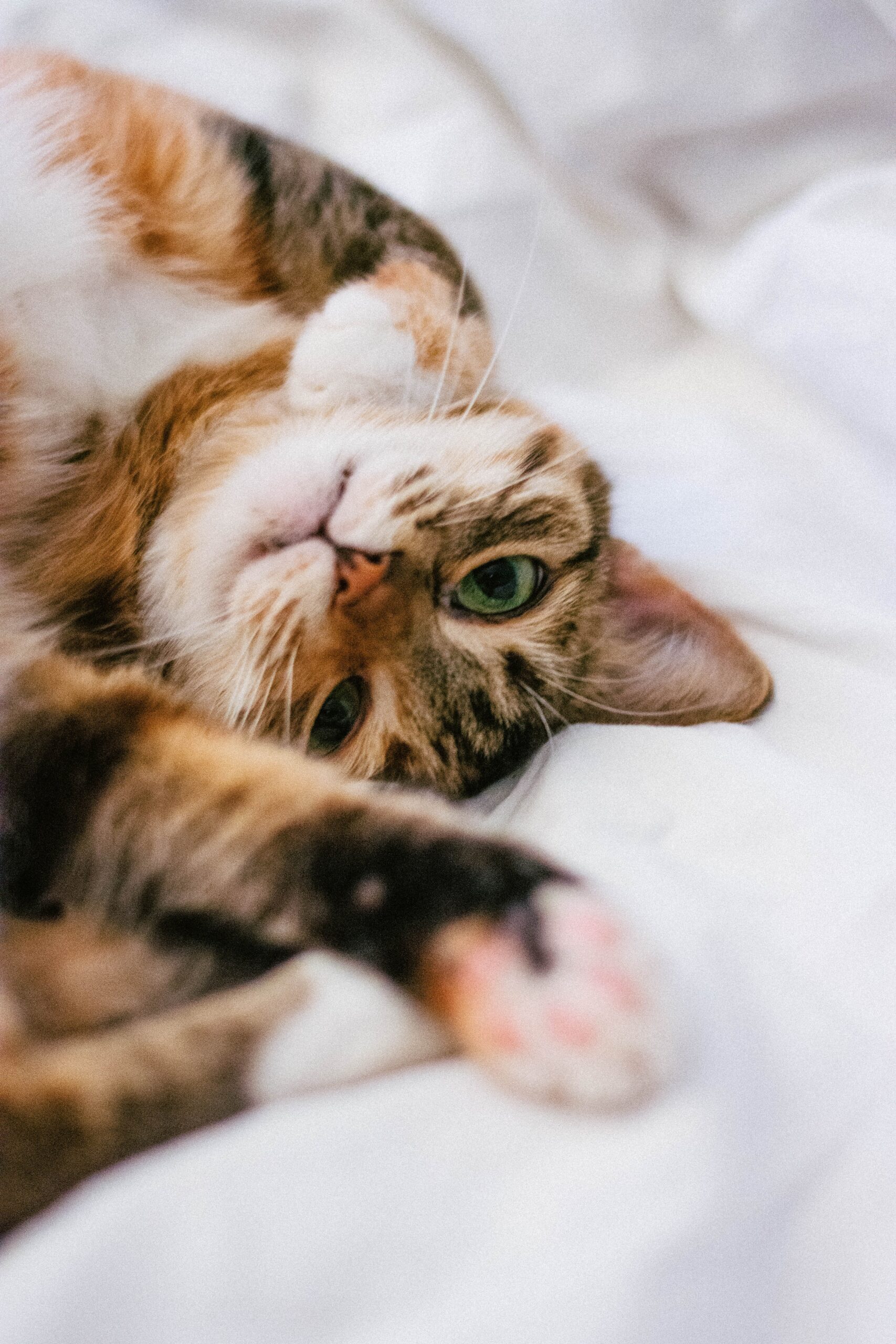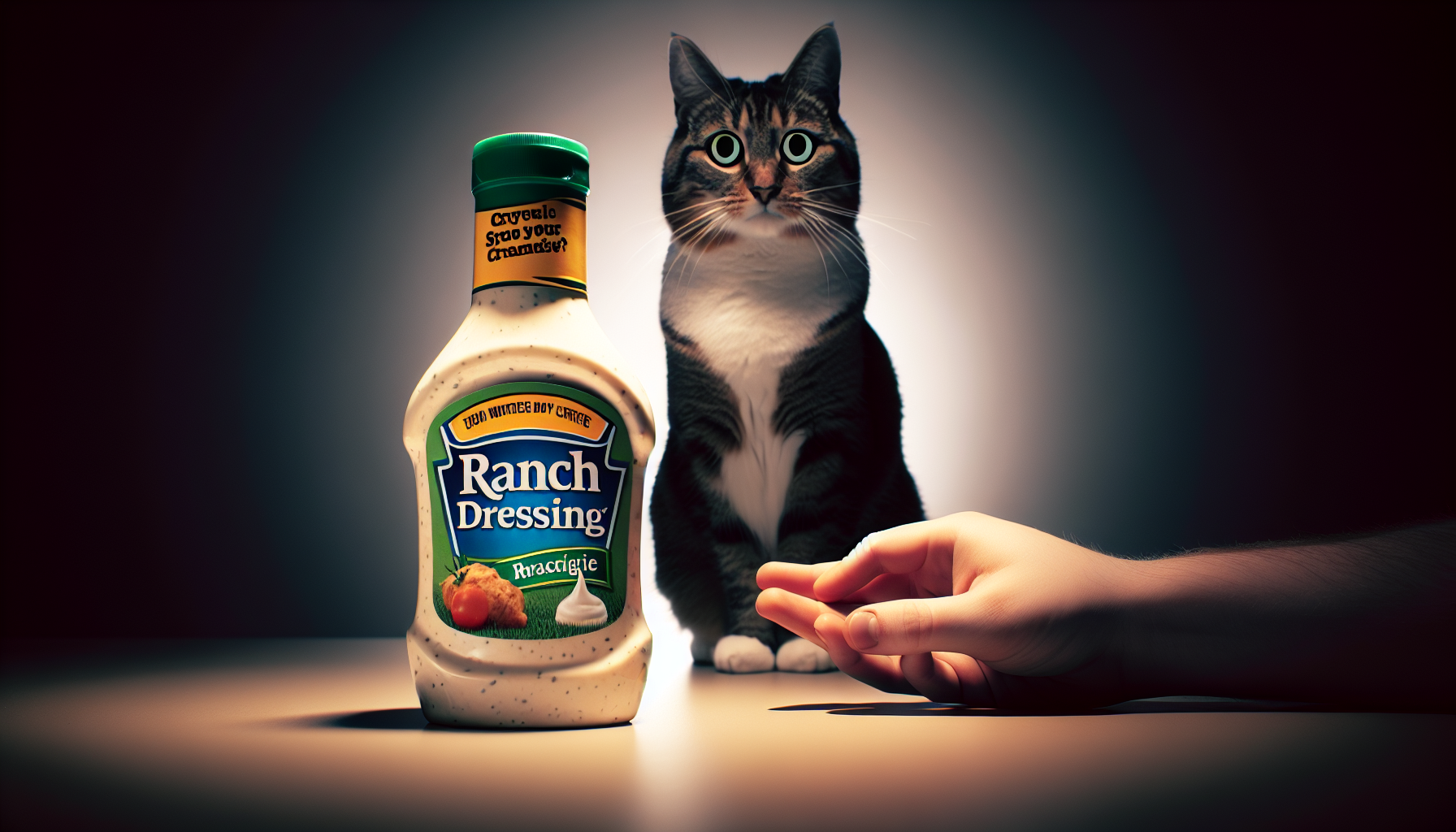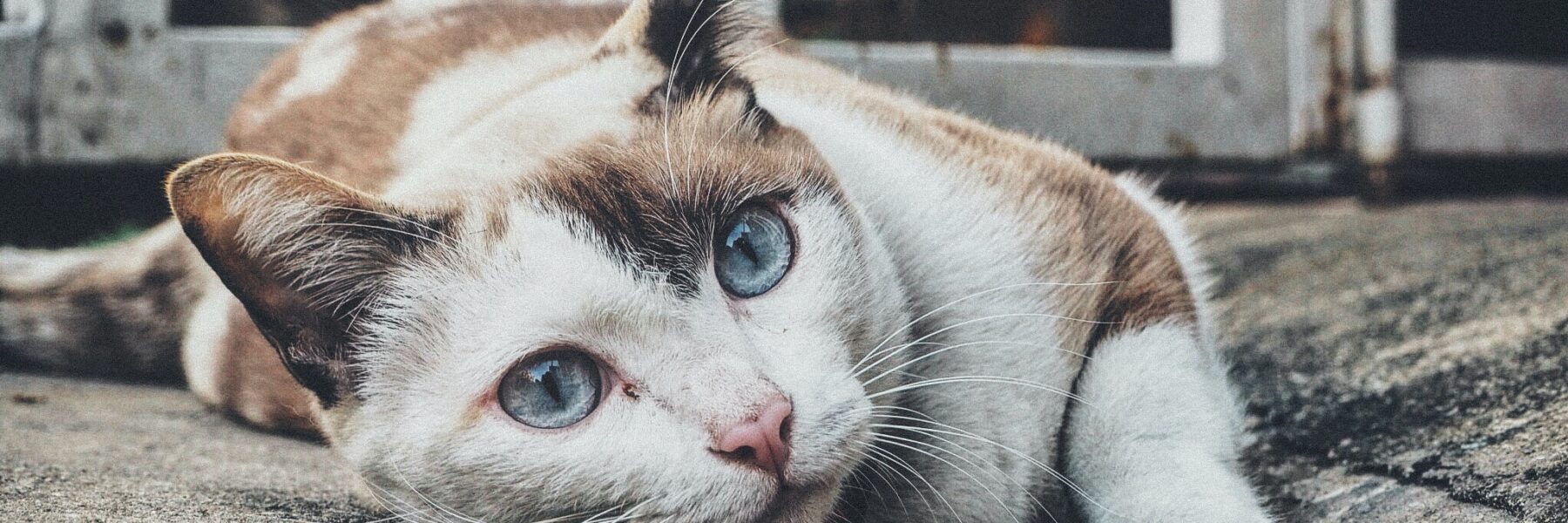Curiosity often strikes when it comes to our feline friends and their dietary preferences. So, here’s the burning question on everyone’s mind: can cats indulge in the creamy indulgence that is ranch dressing? While it’s important to prioritize our furry companions’ health, exploring their taste preferences can be intriguing. So, let’s delve into whether cats can eat ranch and uncover the delightful world of feline culinary curiosities.
Can Cats Eat Ranch?
If you’re a cat owner and a fan of ranch dressing, you may have found yourself wondering whether it’s safe to share this creamy condiment with your feline friend. After all, cats have a curious nature and are often attracted to the smells and tastes of human food. In this article, we will explore whether cats can safely consume ranch dressing, the potential risks involved, and provide alternative options for treating your cat. Before diving into the topic, let’s first define what ranch dressing is and explore the feline diet.
Definition of Ranch Dressing
Ranch dressing is a popular creamy salad dressing that originated in the United States. It typically consists of a base of buttermilk or sour cream mixed with mayonnaise, herbs (such as dill, parsley, and chives), and spices. Some variations may also include onion and garlic powder for added flavor. While it may be a beloved condiment for many people, the same can’t necessarily be said for our feline companions. The feline diet, which we will discuss next, is vastly different from our own.
Understanding the Feline Diet
Cats are obligate carnivores, which means their bodies are designed to thrive on a diet that consists primarily of animal protein. Unlike humans who can derive nutrients from a wide variety of food sources, cats have specific dietary needs that must be met to maintain optimal health. Their bodies require specific amino acids, such as taurine, which are generally found in animal-based proteins. Given their unique nutritional needs, it’s important to consider the potential harmful ingredients in ranch dressing before offering it to your cat.
Potential Harmful Ingredients in Ranch
While ranch dressing may be a tasty addition to our salads and other dishes, it contains ingredients that can be potentially harmful to cats. One such ingredient is onion powder. Onions, as well as garlic, belong to the Allium family and can cause a condition called hemolytic anemia in felines. Even in powdered form, the presence of onion and garlic can pose a risk to your cat’s health. Additionally, ranch dressing is often high in fat content, which can lead to digestive issues and even pancreatitis in cats.
Risks of Feeding Ranch to Cats
Feeding ranch dressing to your cat can have several negative consequences. One of the most common risks is an upset stomach and digestive issues. Cats’ digestive systems are not designed to handle the high fat and spice content found in ranch dressing, leading to potential vomiting, diarrhea, and discomfort. Pancreatitis, a condition in which the pancreas becomes inflamed, is another concern. The high fat content in ranch can trigger an episode of pancreatitis, which requires veterinary treatment. Furthermore, cats can also have allergic reactions to specific ingredients in ranch dressing, further highlighting the importance of considering alternatives.

This image is property of images.unsplash.com.
Can Cats Safely Consume Ranch Dressing?
While the risks associated with feeding ranch dressing to cats are significant, it’s important to note that small amounts consumed infrequently may not pose an immediate danger. However, it’s crucial to consider the potential long-term effects and explore alternatives that are safer and more suitable for feline consumption.
Points to Consider
Before introducing any new food into your cat’s diet, it’s essential to consider their individual health conditions, observe their reactions to new foods, and thoroughly check ingredient lists. A consultation with your veterinarian can provide valuable insights and guidance tailored to your cat’s specific needs. Your vet can assess your cat’s overall health, discuss any existing conditions, and provide recommendations for appropriate dietary choices.
Small Amounts as Occasional Treats
If you still wish to share a small taste of ranch dressing with your cat, it’s important to do so cautiously and sparingly. Limit the amount to an occasional treat and ensure it’s a tiny portion to minimize any potential risks. Keep a close eye on your cat for any adverse reactions, such as vomiting, diarrhea, or changes in behavior. If you notice any negative effects, discontinue offering ranch dressing immediately.
Alternative Dressings for Cats
To cater to your cat’s taste for dressings and sauces, there are alternative options available that are safer and more appropriate for feline consumption. Several commercial cat treats and cat-friendly human foods can satisfy your cat’s cravings for variety without compromising their health. Sticking to products specifically designed for cats can ensure that the ingredients are safe and suitable for their dietary needs.
Homemade Ranch Options
If you’re feeling creative, you can also try making your own homemade cat-friendly dressings. By using simple and healthy ingredients, you can provide your cat with a tasty treat while avoiding harmful additives. Keep in mind that not all ingredients are safe for cats, so it’s important to research and carefully select the ingredients to include.

This image is property of images.unsplash.com.
Determining Whether Ranch is Safe for Your Cat
Ultimately, the decision of whether to feed your cat ranch dressing should be based on careful consideration of the potential risks and benefits, in consultation with your veterinarian. Every cat is unique, and what may be safe for one may not be suitable for another. Factors such as your cat’s age, overall health, and any existing medical conditions should be taken into account.
Consulting with Your Veterinarian
The expertise of a veterinarian is invaluable when it comes to making informed decisions about your cat’s diet. Schedule a consultation with your vet to discuss your concerns and gather professional advice. They can guide you in determining if ranch dressing or any other food item is safe for your cat and offer suitable alternatives.
Considering Your Cat’s Health Conditions
Certain health conditions may make it even more important to avoid feeding ranch dressing to your cat. For example, if your cat has a history of pancreatitis or gastrointestinal issues, introducing high-fat foods found in ranch dressing can exacerbate these conditions. Similarly, cats with allergies or sensitivities to specific ingredients should avoid ranch dressing altogether.
Observing Your Cat’s Reaction to Ranch
Taking note of your cat’s reaction to ranch dressing is crucial in evaluating its safety for consumption. If you do decide to offer your cat a small taste, closely monitor their behavior and any physical changes. Look for any signs of discomfort, gastrointestinal distress, or allergic reactions, such as itching, swelling, or difficulty breathing. If any negative symptoms arise, it’s essential to discontinue feeding ranch dressing and seek veterinary attention if necessary.
Checking Ingredient Lists
Before considering ranch dressing as a potential treat for your cat, carefully examine the ingredient list. Look out for any ingredients that may be toxic or incompatible with a cat’s digestive system. As mentioned earlier, onion and garlic powder should be strictly avoided, as well as any other potential allergens or harmful additives.

This image is property of images.unsplash.com.
The Feline Digestive System and Ranch Dressing
Understanding the unique characteristics of the feline digestive system can shed light on why certain ingredients in ranch dressing can be harmful to cats. The carnivorous nature of cats makes their digestive system different from that of humans and other omnivorous animals.
Influence of Cats’ Carnivorous Nature
Cats have a shorter digestive tract compared to humans, reflecting their evolutionary adaptation to a diet of primarily meat. This means that their bodies are designed to process animal proteins efficiently. While plant-based foods can be part of a balanced feline diet in small amounts, the digestive system of cats is less equipped to handle large quantities of certain ingredients commonly found in ranch dressing.
Problems with High-Fat Foods
The high fat content in ranch dressing poses a significant challenge for cats’ digestive systems. Cats are not physiologically adapted to break down and process large amounts of fat. Consuming excessive fat can lead to digestive issues, such as diarrhea, and in more serious cases, pancreatitis. Pancreatitis, the inflammation of the pancreas, can be life-threatening and requires immediate veterinary care.
Lactose Intolerance in Cats
Another consideration is the lactose content in ranch dressing. Dairy-based ingredients like buttermilk and sour cream can be problematic for cats, as many cats are lactose intolerant. Lactose intolerance occurs when a cat’s body lacks the enzyme lactase, which is necessary to break down lactose, the sugar found in milk products. Feeding ranch dressing with dairy-based ingredients to a lactose-intolerant cat can lead to digestive upset, including gas and diarrhea.
Effects of Onion and Garlic
Onion and garlic, common ingredients in ranch dressing, belong to the Allium family and are toxic to cats. These ingredients contain compounds that can cause oxidative damage to feline red blood cells, leading to a condition called hemolytic anemia. The consequences of consuming even small amounts of onion or garlic can be severe, making it essential to avoid these ingredients when it comes to feeding your cat.

Potential Risks and Side Effects of Feeding Ranch to Cats
Feeding your cat ranch dressing can come with a range of risks and potential side effects. It’s important to be aware of these and take them into consideration when considering offering ranch dressing to your feline companion.
Upset Stomach and Digestive Issues
One of the most common side effects of feeding ranch dressing to cats is an upset stomach and digestive issues. Cats’ digestive systems are not equipped to handle the high fat and spice content found in ranch dressing. Consuming such rich and unfamiliar food can lead to vomiting, diarrhea, and general discomfort in your cat.
Potential for Pancreatitis
As previously mentioned, the high fat content in ranch dressing poses a risk of pancreatitis in cats. Pancreatitis is a condition characterized by inflammation of the pancreas. It can be extremely painful for cats and requires immediate medical attention. Feeding your cat high-fat foods like ranch dressing can significantly increase the chances of developing pancreatitis.
Allergic Reactions in Cats
Cats, like humans, can develop allergies to certain foods or ingredients. Some cats may be specifically allergic to components found in ranch dressing, such as the herbs or spices. Allergic reactions in cats can manifest as itching, redness, swelling, or even difficulty breathing. If you notice any signs of an allergic reaction after feeding your cat ranch dressing, discontinue use immediately and consult with your veterinarian.
Weight Gain and Obesity
Ranch dressing, being high in fat and calories, can contribute to weight gain and obesity in cats. Obesity has become a significant health concern in cats, leading to a variety of health issues, including joint problems, diabetes, and cardiovascular disease. It’s important to monitor your cat’s calorie intake and provide a balanced diet to avoid the risks associated with excessive weight gain.

Nutritional Value of Ranch Dressing for Cats
When considering the nutritional value of ranch dressing for cats, it’s important to note that it is not a suitable dietary choice for felines. The feline diet requires specific nutrients that are not adequately provided by ranch dressing.
The Role of Calories
Ranch dressing is high in calories due to its fat content. While cats require a certain amount of calories to sustain their energy levels, the calories derived from ranch dressing are not nutritionally balanced for their needs. Feeding your cat a high-calorie, low-nutrient food can lead to weight gain and malnutrition.
Fat Content in Ranch
The fat content in ranch dressing is concerning for cats, as their bodies are not designed to process and metabolize high amounts of fat efficiently. Consuming excess fat can lead to weight gain, digestive upset, and contribute to the development of pancreatitis.
Sodium and Other Additives
Ranch dressing often contains additives such as salt and other flavor enhancers. While sodium is an essential mineral for cats, excessive intake can lead to health issues, such as high blood pressure, kidney problems, and dehydration. Additionally, other additives in ranch dressing may not be suitable for feline consumption and can pose the risk of allergic reactions or other adverse effects.
Lack of Essential Nutrients
Ranch dressing does not provide the essential nutrients that cats need to thrive. Cats require specific amino acids, such as taurine, which are primarily found in animal-based proteins. Ranch dressing lacks these vital nutrients and is not a suitable substitute for a balanced feline diet.
Alternatives to Ranch Dressing for Cats
While ranch dressing may not be a safe choice for cats, there are plenty of alternatives that can fulfill your cat’s desire for variety and treats while keeping their health in mind.
Commercial Cat Treats
Commercial cat treats are specifically formulated to meet the nutritional needs of cats. They come in a wide range of flavors and textures, offering a variety of options to suit your cat’s preferences. These treats are typically made with feline-appropriate ingredients and can be a safer alternative to ranch dressing.
Cat-Friendly Human Foods
There are human foods that are safe and enjoyable for cats to consume in moderation. Some examples include small pieces of cooked, unseasoned meats like chicken or turkey, or even plain cooked fish. Always be mindful of any seasoning or additives present in human foods, as they can be harmful to cats.
Cat-Specific Homemade Dressings
If you enjoy preparing food for your cat, you can make cat-specific homemade dressings using feline-friendly ingredients. This allows you to tailor the flavors to your cat’s taste preferences and dietary needs. However, it’s important to avoid using any ingredients that may be harmful to cats, such as onion, garlic, or excessive amounts of fat.
Vegetables and Fruits as Treats
Certain vegetables and fruits can be a healthier alternative to ranch dressing for cats. Small portions of cooked and unseasoned vegetables like carrots, green beans, or even a slice of cucumber can be offered as a treat. It’s important to research which fruits and vegetables are safe for cats, as not all are suitable for feline consumption.
Making Homemade Cat-Friendly Dressings
If you’re interested in making your own cat-friendly dressings at home, there are some simple and healthy ingredients you can use to create tasty treats for your feline friend.
Simple and Healthy Ingredients
When making homemade cat-friendly dressings, it’s crucial to use ingredients that are safe and beneficial for cats. Some examples of suitable ingredients include boiled chicken or fish, bone broth, a small amount of unsalted broth, or even a small portion of plain yogurt (if your cat is not lactose intolerant). Avoid adding any harmful ingredients, such as onion, garlic, or excessive amounts of fat.
Basic Recipe for Cat-Friendly Dressing
A basic recipe for cat-friendly dressing could include a small amount of bone broth mixed with boiled chicken or fish. Simply combine the ingredients in a blender or food processor until you achieve a smooth and creamy consistency. Remember to offer this dressing in small amounts as an occasional treat, rather than as a regular part of your cat’s diet.
Flavor Variations and Ingredients to Avoid
When experimenting with different flavors and ingredients, it’s important to avoid anything that may be toxic or harmful to cats. As mentioned before, ingredients like onion, garlic, excessive fat, and certain seasonings should be strictly avoided. Stick to ingredients that have been proven safe for feline consumption, such as those mentioned earlier.
Storage and Shelf Life
Homemade cat-friendly dressings should be stored in airtight containers in the refrigerator. It’s important to note that these dressings should be used within a few days to ensure freshness and prevent the growth of harmful bacteria. Always check the ingredients and smell the dressing before offering it to your cat, and discard any dressing that appears spoiled or has an off smell.
Conclusion
While cats may have a curious nature and an interest in what we eat, it’s crucial to consider their specific dietary needs before sharing any human food with them, including ranch dressing. The potential risks and harmful ingredients found in ranch dressing make it an unsuitable choice for feline consumption. It’s essential to understand the influence of the feline digestive system, the risks associated with feeding ranch dressing to cats, and the importance of providing a balanced and species-appropriate diet.
If you’re looking to treat your cat, there are plenty of alternative options available, including commercial cat treats, cat-friendly human foods, and homemade feline-specific dressings. Remember to consult with your veterinarian to ensure that any food you introduce into your cat’s diet is safe, appropriate, and aligns with their unique health conditions. By prioritizing your cat’s well-being and seeking professional advice, you can provide them with a safe and enjoyable culinary experience.

